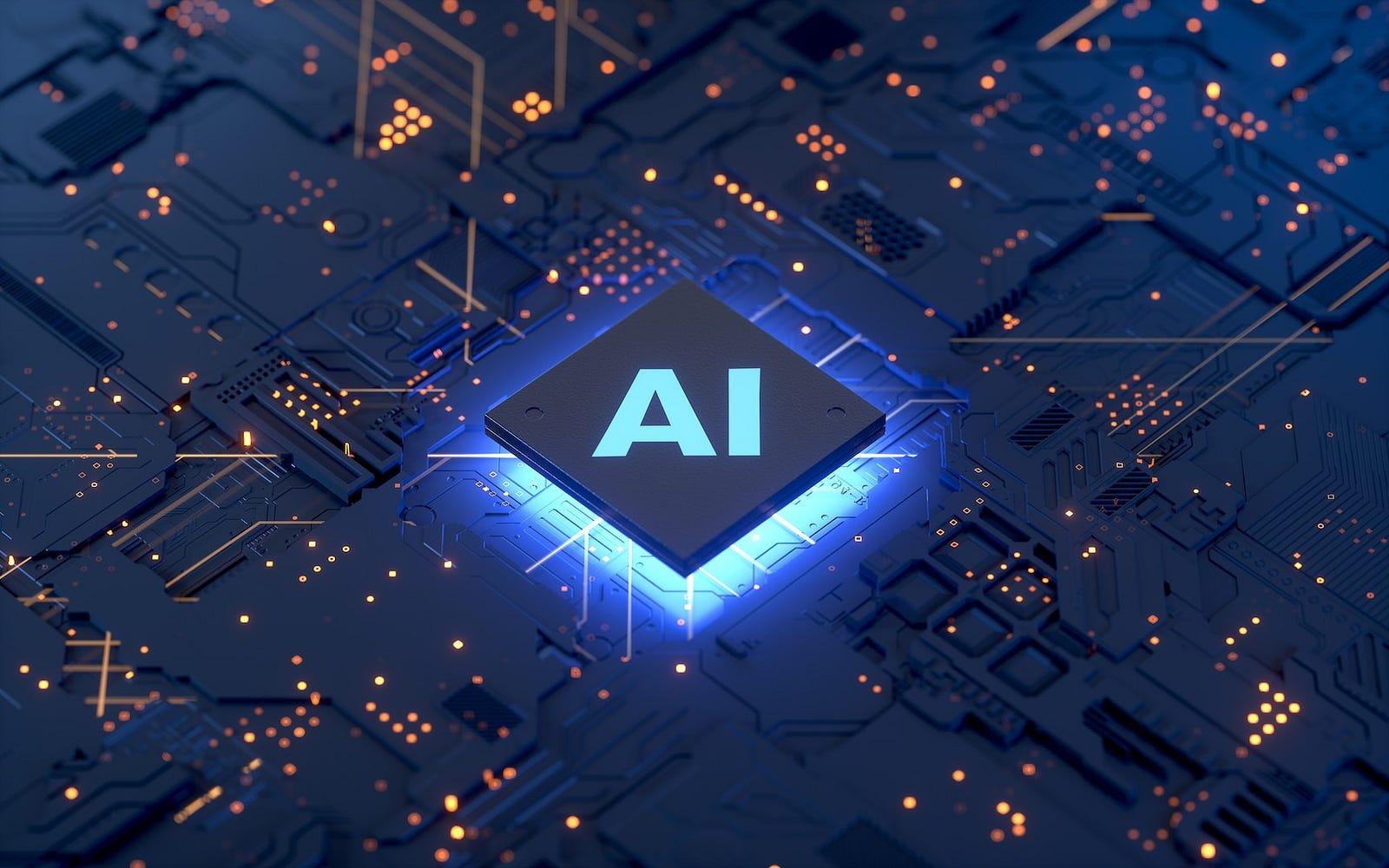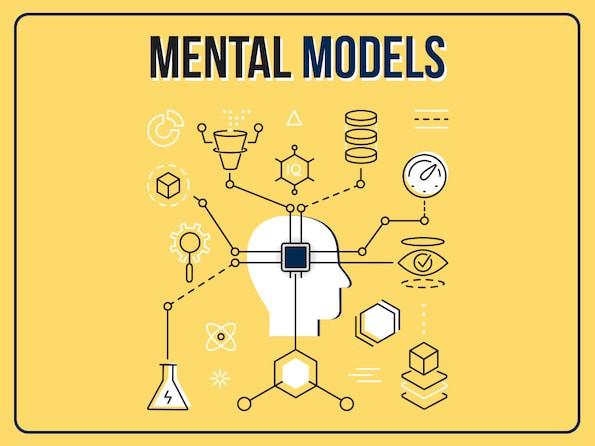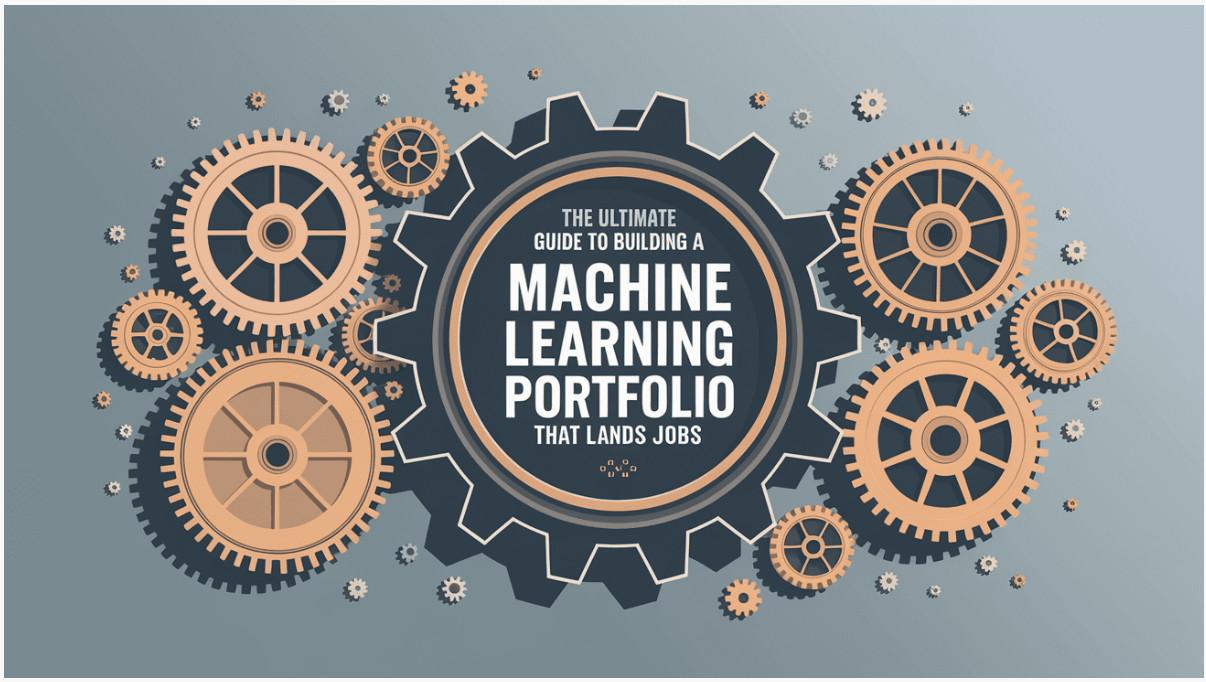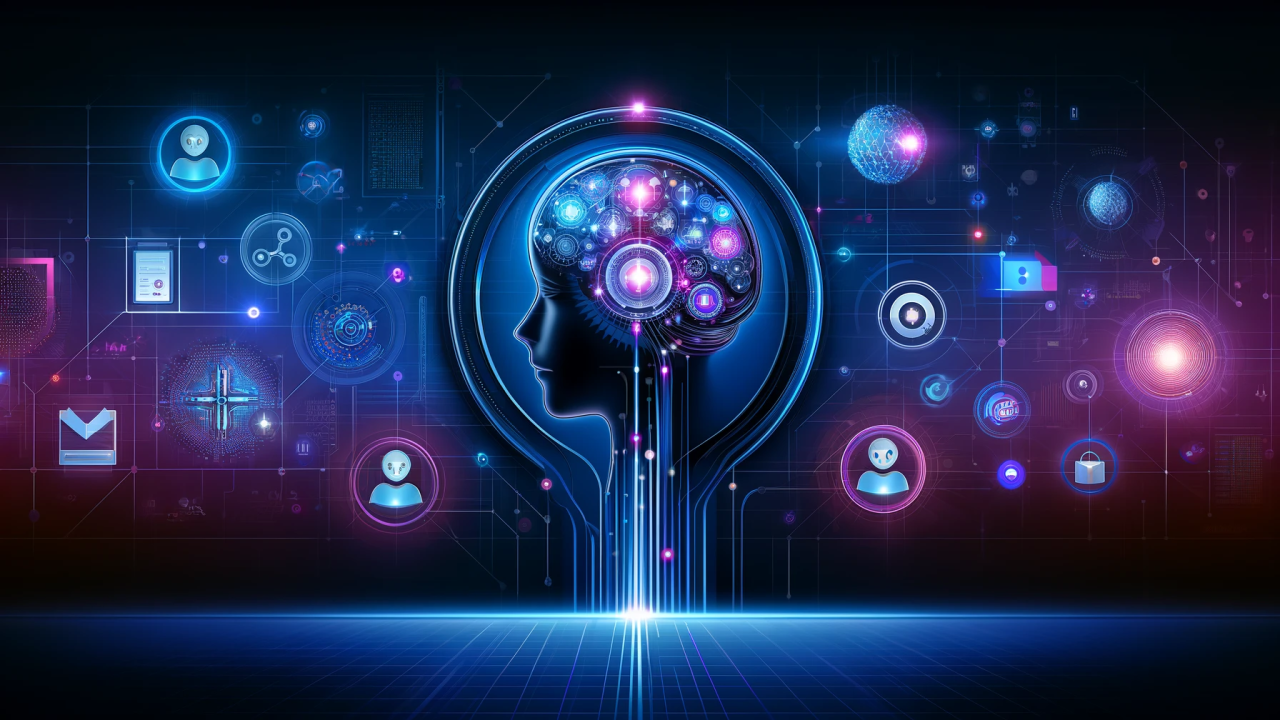Section 1: Introduction - “The New Reality of AI in Recruiting”
It used to be simple.
Technical recruiters sourced candidates, screened resumes, and coordinated interviews, a human-to-human process driven by instinct, networks, and judgment.
Then AI entered the chat.
Now, the recruiter’s toolkit looks very different: LLMs evaluate resumes, ML-powered algorithms predict candidate fit, and automation pipelines schedule interviews before a human ever joins the loop. What was once a relationship-driven craft is rapidly transforming into a hybrid of human intuition and machine intelligence.
But contrary to the fear-mongering headlines, AI isn’t replacing recruiters. It’s redefining them.
Recruiters today sit at the intersection of data science and human storytelling. They no longer just match resumes to job descriptions, they interpret signals, optimize pipelines, and translate technical language into human narratives. In fact, in ML hiring specifically, AI is giving recruiters superpowers, if they know how to use them.
The Shift from Instinct to Intelligence
A decade ago, technical recruiting was a manual, intuition-driven process. Recruiters would search LinkedIn, send InMails, and manually track candidates through spreadsheets or applicant tracking systems (ATS). The role rewarded persistence and people skills.
Today, persistence still matters, but it’s not enough.
AI has automated much of the grunt work:
- Resume parsing is powered by NLP models.
- Skill inference uses embeddings to detect hidden expertise.
- Candidate ranking is driven by predictive analytics.
- Chatbots engage applicants 24/7.
The recruiter’s focus has shifted from execution to interpretation. They must understand what the algorithms surface, and, more importantly, what they miss.
This is especially true in ML hiring, where evaluating candidates isn’t about checking boxes on TensorFlow or PyTorch. It’s about understanding context:
- Does the engineer know how to productionize a model?
- Can they collaborate with data teams effectively?
- Do they understand business trade-offs behind metrics?
AI tools can score resumes, but they can’t assess those nuances, yet. That’s where the modern recruiter’s judgment becomes irreplaceable. Check out Interview Node’s guide on “AI in Interviews: Friend or Foe in the 2025 Job Market”
The Irony: Recruiters Now Need to Think Like ML Engineers
Here’s the twist: as AI transforms recruiting, recruiters themselves must learn machine learning fundamentals, not to build models, but to interpret them.
When an AI model ranks candidates, technical recruiters need to understand why a candidate surfaced, which features mattered, which signals were weighted, and whether the data introduced bias. They’ve become, in a sense, AI translators: bridging what the algorithm “thinks” with what the human hiring team values.
That shift changes everything.
The new recruiter’s advantage isn’t their contact list, it’s their ability to combine empathy with data literacy.
They’re learning prompt engineering to personalize outreach at scale.
They’re fine-tuning candidate recommendations based on hiring manager feedback.
They’re analyzing recruiter performance dashboards to iterate hiring pipelines like ML engineers tune models.
Recruiting has become applied machine learning, but with human empathy still at the center.
The Evolution of Trust
As companies like LinkedIn, Google, and HireEZ embed generative AI into their recruiting products, candidates are beginning to notice something new: outreach emails that feel eerily personal, questions that are hyper-specific to their past projects, and recruiters who seem to “get” their experience instantly.
That’s AI, curating, synthesizing, and recommending in the background.
But the paradox of automation is trust. Candidates may engage faster with personalized outreach, but they also expect authenticity. The recruiter’s new challenge is balancing automation with empathy, ensuring that what’s personalized still feels personal.
“AI can start the conversation, but only humans can build trust.”
That’s why, rather than fading into the background, technical recruiters are becoming AI copilots, orchestrating technology while preserving the human essence of hiring.
In this new era, AI doesn’t eliminate the recruiter. It eliminates bad recruiting, the guesswork, the generic messaging, the inefficiencies.
The best recruiters are not resisting the shift; they’re leading it.
Section 2: The Old vs. New Recruiting Workflow
For decades, technical recruiting followed a familiar rhythm.
A job opened, recruiters drafted a posting, sourced candidates on LinkedIn, conducted phone screens, and scheduled interviews. It was time-intensive, manual, and heavily reliant on a recruiter’s personal network and memory.
But AI has redrawn that workflow entirely. Today, the best recruiters don’t just source candidates, they analyze, predict, and curate them.
The recruiter’s workflow has evolved from a linear process into a dynamic, data-driven feedback loop powered by machine learning.
Let’s break down how that shift happened, and what it means for ML hiring.
a. The Traditional Recruiting Workflow: Manual, Intuitive, and Linear
Until a few years ago, the typical recruiter’s day looked like this:
- Post a job description on LinkedIn or an ATS.
- Search for candidates using keyword filters.
- Manually screen resumes to identify potential fits.
- Reach out with a standard template email.
- Schedule interviews via email back-and-forth.
- Hand off to hiring managers for technical evaluation.
It worked, slowly.
Recruiters became gatekeepers who relied on pattern recognition and instincts. Their biggest advantage was human intuition: recognizing potential beyond a resume’s surface. But that intuition came at a cost, time, bias, and inconsistency.
This traditional model couldn’t scale. As machine learning roles exploded in demand, recruiters faced thousands of applicants, most of whom didn’t fit the job. The process broke under its own weight.
Check out Interview Node’s guide on “The Future of ML Hiring: Why Companies Are Shifting from LeetCode to Case Studies”
b. The AI-Powered Workflow: Predictive, Continuous, and Insight-Driven
Today’s AI-driven recruiting stack looks radically different.
It’s not just automation, it’s augmentation. AI now handles repetitive tasks, freeing recruiters to focus on relationship-building and decision-making.
Here’s what that looks like in practice:
| Step | Old Workflow | AI-Powered Workflow |
| Sourcing | Manual LinkedIn searches | AI scans millions of profiles and predicts best-fit candidates using embeddings |
| Screening | Human keyword filtering | NLP models parse resumes and infer latent skills (e.g., project-based expertise) |
| Outreach | Generic email templates | Generative AI personalizes outreach using candidate data |
| Interview Coordination | Manual scheduling | AI assistants schedule interviews automatically based on calendar syncs |
| Feedback Loop | Limited recruiter memory | Predictive analytics identify patterns in hiring outcomes and optimize searches |
Instead of working for the system, recruiters now work with it, as analysts and strategists. They interpret the AI’s recommendations, identify edge cases, and fine-tune search parameters.
The role has shifted from search execution to signal interpretation.
c. How AI Changed What Recruiters Measure
Traditional metrics like “time to fill” or “number of sourced candidates” no longer capture success. AI has introduced new, data-rich metrics that reflect both efficiency and quality.
Recruiters now track:
- Pipeline conversion rates by model recommendation score
- Skill cluster accuracy (how well AI inferred candidate capabilities)
- Diversity metrics post-AI filtering
- Engagement sentiment via AI-driven email tone analysis
- Hiring velocity per role category
This shift has elevated recruiters into data-driven partners in the hiring process. They now collaborate with ML and analytics teams to understand model outputs, bias metrics, and precision-recall trade-offs in candidate selection.
Recruiters no longer just use AI, they audit it. Check out Interview Node’s guide on “The Hidden Metrics: How Interviewers Evaluate ML Thinking, Not Just Code”
d. A Real-World Example: LinkedIn’s AI Recruiter
LinkedIn’s AI Recruiter 2025 product embodies this transformation.
It uses ML embeddings trained on billions of profiles to surface candidates who might not match traditional keywords but demonstrate inferred expertise, say, a computer vision engineer who has worked on autonomous vehicle perception systems but never used the keyword “ML model training.”
For recruiters, that’s a game changer.
Instead of rejecting good candidates because of missing buzzwords, AI helps uncover potential based on underlying experience patterns.
At companies like Google, recruiters use similar models internally to identify engineers who’ve built production systems involving TensorFlow Extended (TFX) or Vertex AI.
The result? Faster, fairer, and more contextual matching.
But this also means recruiters must trust and understand the models, interpreting why someone was recommended, verifying fit, and maintaining accountability.
e. The Human Layer Still Matters
AI might be rewriting the workflow, but human judgment remains the final gate.
Recruiters are still the translators between algorithmic prediction and cultural fit, between data and nuance.
The workflow evolution doesn’t remove humans; it repositions them higher in the value chain.
They’re now:
- System interpreters (understanding AI recommendations),
- Bias auditors (checking fairness of automated filters), and
- Storytellers (communicating candidate potential to hiring teams).
The recruiter’s day is no longer consumed by searching, it’s defined by strategy, storytelling, and signal verification.
In short, AI isn’t replacing recruiters, it’s replacing recruiters who refuse to evolve.
Section 3: How Recruiters Use AI to Identify ML Talent
Sourcing strong ML talent has always been a puzzle, even for the most experienced technical recruiters.
The traditional approach relied heavily on keyword matching and job titles: if a resume said “TensorFlow, Python, and AWS,” it went into the shortlist. But the reality is that the best ML engineers rarely describe their work in standard ways, and the strongest candidates are often invisible to conventional filters.
AI is now solving that problem. By interpreting patterns in data, code, and context, it allows recruiters to identify qualified ML engineers who would have otherwise slipped through the cracks.
a. From Keyword Matching to Semantic Understanding
In the past, recruiter searches were rigid:
“Machine Learning Engineer” AND “TensorFlow” AND “Python.”
Today, AI-driven sourcing tools use semantic embeddings, the same kind of language models that power ChatGPT, to understand meaning, not just words.
For instance, if a candidate lists “developed gradient boosting models for credit risk scoring,” an AI model can infer that the candidate likely has experience with XGBoost or LightGBM, even if those keywords never appear.
This semantic understanding is transformative. It means recruiters can now search for capabilities, not just keywords.
“Find engineers experienced in large-scale model training and data drift mitigation”
returns candidates who may have worked with TFX, SageMaker, or Airflow, even if those terms aren’t mentioned.
Check out Interview Node’s guide on “The Hidden Metrics: How Interviewers Evaluate ML Thinking, Not Just Code”
b. AI Models Now Read Beyond Resumes
Resumes are notoriously incomplete.
Strong ML engineers often showcase their best work on GitHub, Kaggle, Papers with Code, or personal blogs.
Modern recruiting AI models pull signals from all these sources, analyzing:
- Code repositories to infer technical proficiency,
- Kaggle rankings for applied ML experience,
- Research publications for theoretical grounding,
- Portfolio structure to detect end-to-end project skills.
For example, if a candidate consistently uses MLFlow or Weights & Biases in their GitHub commits, the model can infer familiarity with production ML workflows. Recruiters who use these tools now get multi-dimensional candidate profiles that go far beyond resumes.
The AI can even cluster candidates by expertise, say, LLM fine-tuning, MLOps infrastructure, or computer vision systems, helping recruiters shortlist based on hiring manager priorities.
Check out Interview Node’s guide on “ML Interview Toolkit: Tools, Datasets, and Practice Platforms That Actually Help”
c. Predictive Matching: AI as a Talent Scout
One of the biggest shifts in recruiting is predictive matching, using machine learning to forecast which candidates are likely to succeed in a given role based on historical data.
Here’s how it works:
- AI systems train on data from past hires (education, project type, coding assessments, tenure).
- They identify patterns that correlate with long-term success.
- They use those patterns to rank new candidates, even before human review.
For instance, an ML engineer who’s previously built scalable data ingestion systems might score high for an MLOps-focused position, even if their resume doesn’t emphasize infrastructure.
This doesn’t mean the AI is making the decision, but it gives recruiters signal intelligence to start meaningful conversations faster.
Recruiters now act more like analysts than hunters. They interpret model outputs, validate them against context, and prioritize candidates who might have been overlooked in keyword-based searches.
d. AI-Powered Candidate Deep Dives
Recruiters today can use generative AI to summarize a candidate’s technical background in seconds.
For example:
“Summarize this candidate’s ML expertise based on their resume and GitHub link.”
An LLM can generate a recruiter briefing like:
“Candidate specializes in applied NLP, with experience fine-tuning BERT-based models for customer support automation. Demonstrates MLOps knowledge via MLFlow usage and has production deployment experience with FastAPI.”
This kind of instant synthesis lets recruiters engage with hiring managers intelligently, rather than just passing resumes along.
They can say, “This engineer’s profile aligns with our conversational AI roadmap, worth a phone screen.”
Check out Interview Node’s guide on “The Forgotten Round: How to Ace the Recruiter Screen in ML Interviews”
e. Discovering Hidden Talent: AI as a Diversity Engine
AI sourcing can also reduce visibility bias, if used responsibly.
Instead of filtering for specific schools or companies, AI models trained on skills can highlight non-traditional candidates with strong potential.
For example, an engineer from a small startup who’s contributed to open-source ML frameworks might surface alongside FAANG candidates because their skills graph looks similar.
When recruiters combine this capability with ethical oversight, AI becomes a diversity amplifier, not a gatekeeper.
AI can’t remove bias by itself, but it can reveal where human bias hides.
Check out Interview Node’s guide “The New Rules of AI Hiring: How Companies Screen for Responsible ML Practices”
f. The Recruiter’s Role in the Loop
Even with these advances, AI isn’t doing the recruiter’s job, it’s changing it.
Recruiters must now:
- Understand how ML models rank candidates.
- Detect false positives (e.g., resumes that look perfect but lack depth).
- Explain model outputs to skeptical hiring managers.
- Balance automation speed with fairness and empathy.
They’ve become human-in-the-loop validators, ensuring that data-driven decisions still reflect human values.
In the new AI-powered world, recruiters don’t compete with algorithms.
They curate and correct them.
Section 4: AI as a Recruiter’s Copilot - Not a Replacement
If you ask most recruiters what they fear about AI, the first answer you’ll hear is:
“It’s going to replace me.”
But that’s a misconception born out of the early automation hype.
The truth is, AI is not replacing recruiters; it’s replacing the repetitive, low-value parts of their job.
Recruiters are still the connective tissue between candidate potential and business needs. AI is simply giving them a copilot, a digital assistant that removes friction, improves decision quality, and lets them focus on what they do best: building relationships, telling stories, and exercising judgment.
a. From Task Execution to Strategy and Storytelling
Recruiters once spent most of their time on logistics, scheduling interviews, formatting resumes, and chasing feedback loops.
Now, AI automates most of that.
Today’s leading recruiting platforms, such as Ashby, HireLogic, and Paradox AI, can:
- Generate personalized outreach emails for candidates.
- Schedule multi-round interviews using calendar syncs.
- Summarize candidate conversations using NLP.
- Surface “next best actions” based on pipeline analytics.
What used to take hours can now be done in minutes.
That time doesn’t eliminate recruiters, it elevates them.
Freed from busywork, recruiters can now focus on:
- Understanding team culture and technical expectations.
- Coaching candidates through interview preparation.
- Interpreting hiring data to improve outcomes.
- Building narratives that attract top ML talent.
Check out Interview Node’s guide “The Forgotten Round: How to Ace the Recruiter Screen in ML Interviews”
b. How Recruiters Use AI in Daily Workflows
Let’s break down what “AI as a copilot” looks like in practical terms:
| Recruiter Task | Traditional Approach | AI-Assisted Approach |
| Outreach | Manually drafting emails | AI generates personalized messages using candidate’s public data (GitHub, LinkedIn, Kaggle) |
| Interview Prep | Recruiter explains job description verbally | AI generates a “candidate prep brief” summarizing key skills needed for success |
| Post-Interview Debriefs | Recruiter writes summaries manually | LLMs transcribe calls and generate debrief summaries |
| Pipeline Analysis | Recruiter manually checks spreadsheets | AI dashboards surface conversion patterns and anomalies |
| Feedback Communication | Recruiter mediates between panelists | AI detects sentiment and consolidates key interview feedback |
Instead of replacing the recruiter, AI extends their cognitive bandwidth.
It helps them make faster, more informed, and more empathetic decisions.
c. Personalization at Scale
Before AI, personalization was impossible at scale.
Recruiters wanted to tailor messages, but with hundreds of candidates, it wasn’t feasible.
Now, tools like ChatGPT Enterprise, Gem AI, or Hiretual allow recruiters to personalize outreach using candidate-specific context, such as:
“Hey Alex, I saw your recent Kaggle project on time-series forecasting. We’re building a similar system at Uber to predict demand spikes. Want to chat?”
That single line changes engagement dramatically.
Candidates immediately know that the recruiter isn’t just blasting generic messages. The AI made it possible to scale sincerity, the holy grail of recruiting.
Check out Interview Node’s guide “The Psychology of Interviews: Why Confidence Often Beats Perfect Answers”
d. AI Tools Are Becoming Recruiters’ Daily Companions
The rise of “recruiter copilots” mirrors the “developer copilots” engineers use.
Recruiters now use LLM-powered extensions integrated into ATS systems:
- LinkedIn Recruiter AI Copilot: Suggests talent based on search context.
- Ashby’s AI Analytics: Predicts which candidates are most likely to respond.
- HireLogic: Generates summaries of candidate calls and technical notes.
- Paradox Olivia: Manages early-stage candidate Q&A via natural conversation.
These tools have redefined productivity benchmarks. A single recruiter, empowered by AI, can now manage the pipeline volume that once required a team of three.
But efficiency isn’t the full story, empathy remains the differentiator.
The most successful recruiters in 2025 are those who use AI for data augmentation, not decision delegation. They use it to ask better questions, not avoid them.
“AI can help you find the right people. But only humans can make them say yes.”
e. The New Recruiter Superpower: Narrative Intelligence
Recruiters have always been storytellers. But now, AI helps them tell better, data-informed stories.
Imagine a recruiter preparing to pitch a role to a senior ML engineer.
Instead of generic talking points, their AI assistant surfaces insights like:
- “The company’s model serving stack uses Ray + Triton.”
- “The team is focusing on reinforcement learning for ad optimization.”
- “This engineer has built similar systems in past roles.”
The recruiter can then frame the conversation around impact, growth, and alignment, transforming the pitch into a genuine dialogue.
That’s the real promise of AI in recruiting, contextual empathy at scale.
Check out Interview Node’s guide “Beyond the Model: How to Talk About Business Impact in ML Interviews”
f. The Recruiter’s New Value Proposition
In this AI-augmented era, recruiters are no longer evaluated just on “time-to-hire” or “number of candidates screened.”
They’re valued for:
- Insight: Understanding data and candidate signals deeply.
- Trust: Humanizing automated processes.
- Narrative clarity: Connecting business goals with candidate aspirations.
- Bias mitigation: Ensuring fairness despite algorithmic recommendations.
AI doesn’t reduce the need for recruiters, it raises the bar for what good recruiting looks like.
The technical recruiter of the future is part analyst, part storyteller, and part ethicist.
Their success depends not on how well they search, but on how well they interpret AI outputs and build human trust around them.
Conclusion: AI Isn’t Replacing Recruiters-It’s Redefining Them
The past few years have made one truth undeniable:
AI is not taking recruiters’ jobs, it’s transforming what those jobs mean.
In technical and ML hiring, recruiters have gone from being résumé readers to strategic talent architects, professionals who blend human insight with machine precision.
The recruiter of the past was judged by how many candidates they sourced.
The recruiter of the future will be judged by how intelligently they leverage AI, to surface diverse talent, analyze pipelines, and make faster, fairer decisions.
They’re no longer gatekeepers; they’re interpreters of intelligence.
They sit between the algorithm and the human, translating patterns into possibilities.
AI has given them new lenses:
- Data literacy to interpret model recommendations.
- Ethical awareness to question bias.
- Narrative fluency to personalize outreach at scale.
But one thing remains unchanged:
The essence of recruiting is still human.
Trust, empathy, intuition, and storytelling, these are not replaceable. They are amplified by AI.
The recruiters who thrive in this new era will not compete with AI; they’ll collaborate with it, using it as a copilot to do what they’ve always done best: connect talent to opportunity.
The next generation of great recruiters won’t just find ML engineers, they’ll think like them.
Check out Interview Node’s guide “The New Rules of AI Hiring: How Companies Screen for Responsible ML Practices”
FAQs: How AI Is Changing the Role of Technical Recruiters in ML Hiring
1. Will AI replace technical recruiters?
No, AI will replace repetitive tasks, not the recruiter’s role itself. It will handle resume parsing, scheduling, and candidate matching, while humans focus on empathy, strategy, and ethical oversight. Recruiters are evolving into AI copilots, not competitors.
2. How are recruiters using AI in ML hiring today?
Recruiters use AI to analyze candidate data, predict fit, personalize outreach, and manage pipelines. For instance, tools like HireLogic summarize candidate calls, and Ashby AI predicts candidate response likelihood. The result is a faster, data-driven workflow without losing the human touch.
3. What skills do recruiters now need in an AI-powered world?
Modern recruiters need:
- Data literacy (understanding model recommendations and metrics),
- Ethical awareness (bias, fairness, explainability), and
- Storytelling ability (crafting human narratives around technical roles).
Essentially, they need to think like analysts, not just connectors.
4. How do AI systems identify ML engineers differently from humans?
AI looks for patterns and inferred skills, not just keywords. For example, if someone has built transformer-based models but didn’t list “NLP,” AI may still flag them as an NLP engineer based on project semantics. This allows recruiters to discover hidden talent previously overlooked by keyword filters.
5. What are the main risks of using AI in recruiting?
The biggest risks are bias, lack of transparency, and data privacy violations.
If models are trained on biased historical data, they can unintentionally perpetuate inequality. Recruiters now act as bias auditors, validating outputs and ensuring compliance with ethical hiring standards.
6. How can recruiters ensure AI hiring remains ethical?
By following the “Explain, Audit, Adjust” framework:
- Explain: Be transparent about how AI supports hiring.
- Audit: Routinely check AI outputs for demographic bias.
- Adjust: Retrain or fine-tune models to promote fairness.
Human oversight must remain central to any automated hiring system.
7. What role does data privacy play in AI recruiting?
AI tools often aggregate data from public platforms like GitHub, LinkedIn, or Kaggle. Recruiters must ensure this usage complies with data protection regulations such as the EU AI Act and EEOC guidelines in the U.S. Transparency about how candidate data is used is no longer optional, it’s mandatory.
8. How are recruiters collaborating with AI systems?
Recruiters now train their AI tools through feedback loops. When a recruiter accepts or rejects AI-suggested candidates, that decision retrains the model, improving future accuracy. Recruiters have effectively become AI trainers, teaching systems what good hiring looks like.
9. How has AI changed candidate outreach and engagement?
AI enables personalized outreach at scale. Recruiters can now send context-rich messages referencing a candidate’s open-source contributions, recent publications, or Kaggle achievements. Candidates feel seen, not spammed, because AI transforms data into relevance.
10. How do ML engineers view AI-powered recruiting?
Many ML engineers appreciate efficiency and personalization, but they value authenticity above all. They expect recruiters to understand the technology behind AI tools, not just use them. Recruiters who can discuss model bias, embeddings, or pipeline workflows gain instant credibility.
11. What are “AI talent advisors,” and why are they the future?
AI talent advisors are next-generation recruiters who act as strategic partners. They don’t just source candidates; they interpret data, mentor hiring managers, and guide ethical AI use in hiring. This hybrid role combines recruiting expertise + technical fluency + business insight.
12. Which companies are leading the way in AI-driven recruiting?
Leaders include LinkedIn, Google, and HireEZ, each integrating AI for candidate discovery and matching. Startups like Ashby and Paradox AI are pioneering recruiter copilots that automate sourcing, outreach, and feedback summarization.
13. What should ML engineers do to stand out in AI-powered hiring systems?
Be discoverable and quantifiable:
- Keep profiles updated across GitHub, LinkedIn, and Kaggle.
- Showcase end-to-end projects with measurable results.
- Use consistent technical terminology so AI systems can infer skills accurately.
14. How can companies balance automation and empathy in recruiting?
By designing hybrid workflows: AI handles repetitive tasks (screening, scheduling), while recruiters handle human tasks (feedback, negotiation, storytelling). The companies that master this balance will hire faster and smarter.
15. What’s the future of recruiting in the age of AI?
Recruiting will look more like product management, iterative, data-informed, and outcome-driven. Recruiters will manage AI pipelines the way ML engineers manage models, optimizing for fairness, conversion, and engagement.
The most successful recruiters will be those who can combine three superpowers:
- Empathy - to connect with humans.
- Analytics - to interpret data.
- Ethics - to build trust.
The recruiters of the future won’t be replaced by AI, they’ll be the ones training it.
Final Thought:
AI is changing the game, but not the goal.
The goal of recruiting has always been to match potential with possibility.
And in that mission, human recruiters, now more empowered than ever, will remain the heart of hiring.






